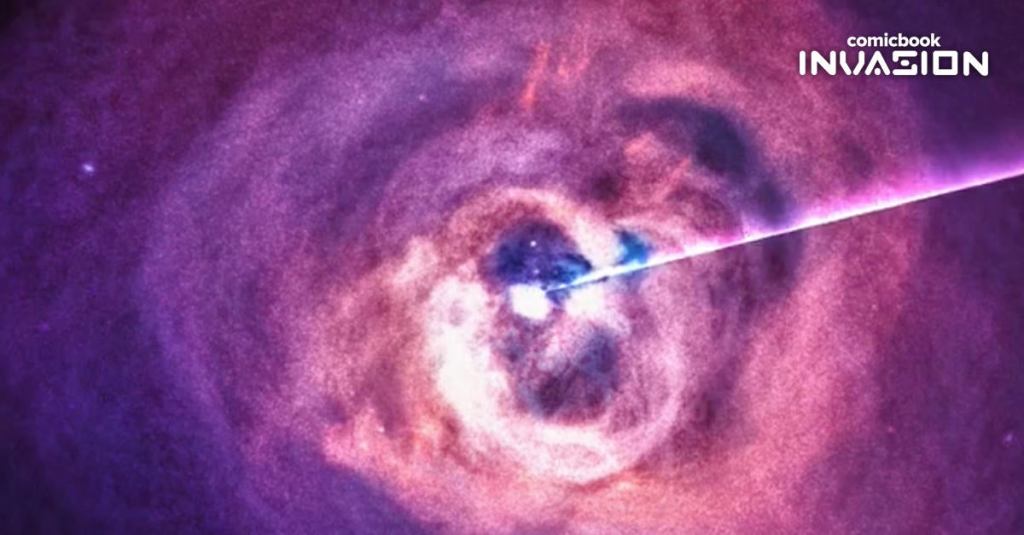NASA has had its hands full as of late. The space agency is hard at work putting together an exhaustive UFO study while simultaneously analyzing data captured by the outfit’s fancy new James Webb Space Telescope. On top of that all, the group has gone mega-viral on Twitter for reposting the sound of a black hole it captured earlier in the year.
Videos by ComicBook.com
Sunday, the social media for NASA’s Exoplanets team shared the eerie sound, mixing it with other available data for the spooky end result. “The misconception that there is no sound in space originates because most space is a ~vacuum, providing no way for sound waves to travel,” the group’s tweet reads. “A galaxy cluster has so much gas that we’ve picked up actual sound. Here it’s amplified, and mixed with other data, to hear a black hole!”
The sound itself was released earlier this year after being altered by NASA researchers. Because the black hole emanated sounds some 57 octaves below middle C, liberties had to be taken with other data available.
“In this new sonification of Perseus, the sound waves astronomers previously identified were extracted and made audible for the first time. The sound waves were extracted in radial directions, that is, outwards from the center,” researchers wrote in May. “The signals were then resynthesized into the range of human hearing by scaling them upward by 57 and 58 octaves above their true pitch. Another way to put this is that they are being heard 144 quadrillion and 288 quadrillion times higher than their original frequency. (A quadrillion is 1,000,000,000,000,000.) The radar-like scan around the image allows you to hear waves emitted in different directions. In the visual image of these data, blue and purple both show X-ray data captured by Chandra.”
The sound waves were first discovered at NASA’s Cahndra X-ray Observatory.









